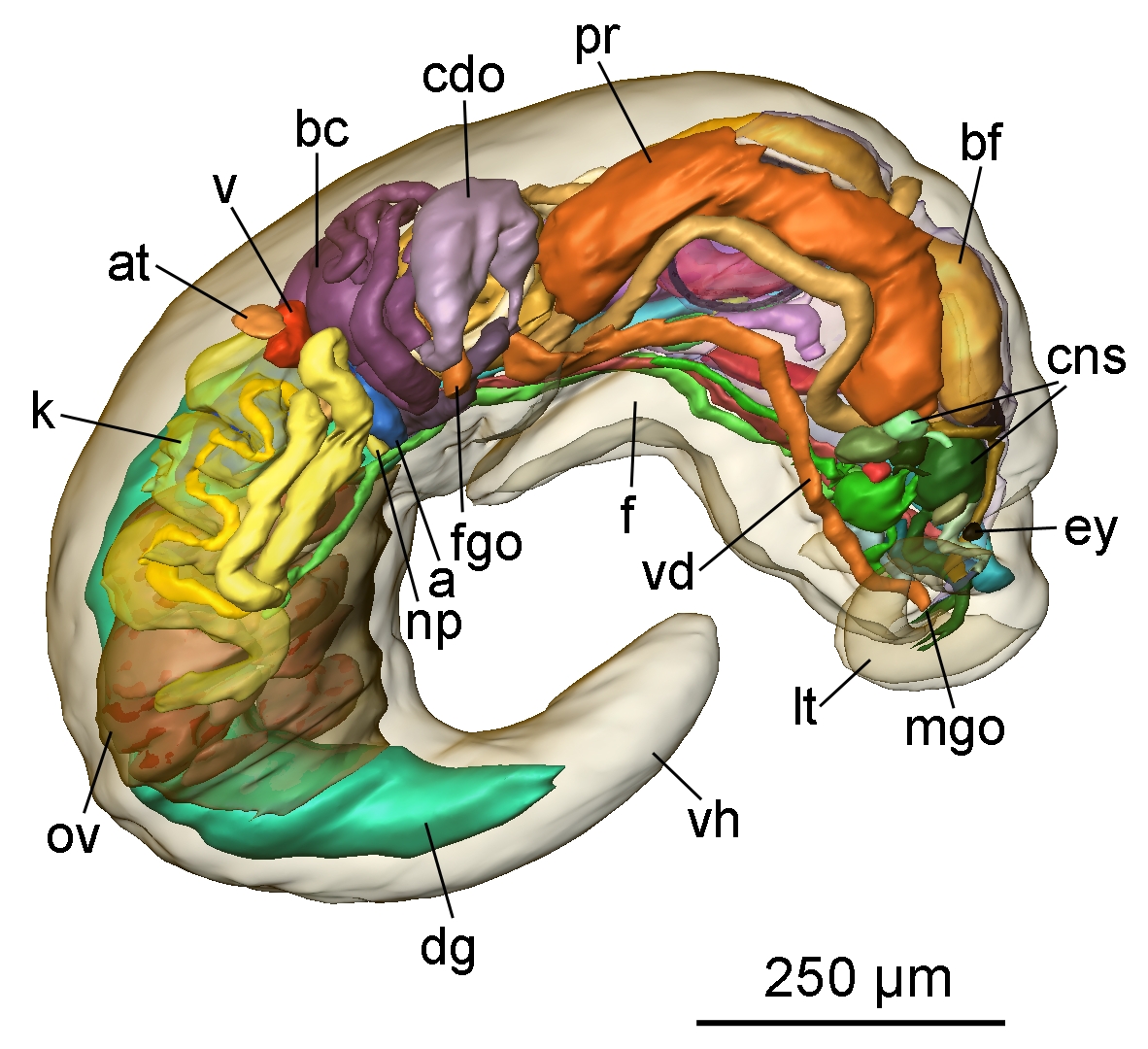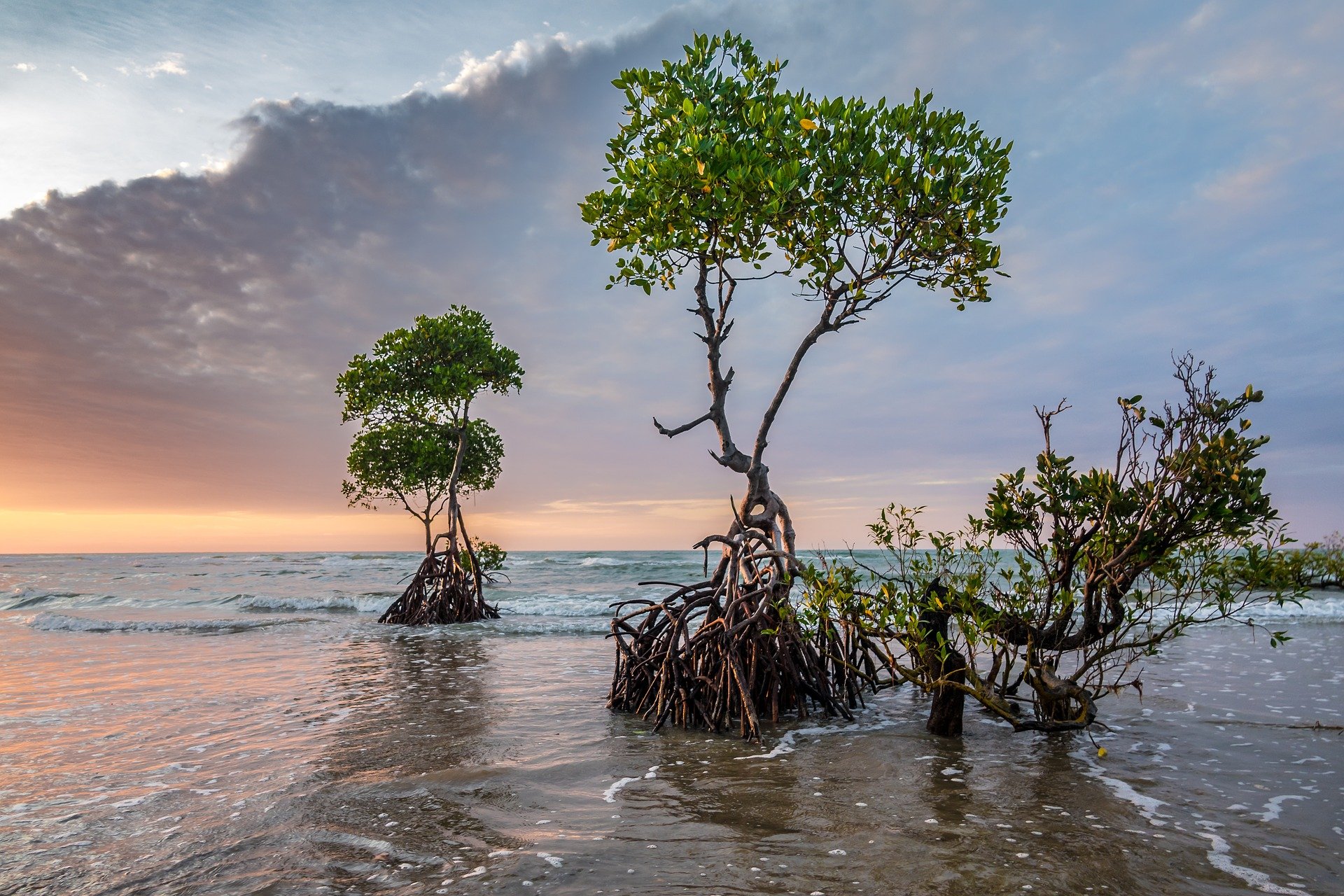|
Aitengidae
''Aiteng'' is a genus comprising three species of sea slug, ''A. ater'' and ''A. mysticus'' being found in intertidal zones while ''A. marefugitus'' is fully terrestrial. ''Aiteng'' is the only genus in the family Aitengidae. The name of a biological genus, generic name ''Aiteng'' is derived from the name of a black puppet Ai Theng, which is one of the shadow play (Nang drama, Nang yai) puppets in southern Thailand. Taxonomy Swennen & Buatip (2009) tentatively classified Aitengidae within the Sacoglossa, but they noted that some characteristics of the Nervous system of gastropods, nervous system are similar to those of the Cephalaspidea and Acochlidioidea (mentioned as Acochlidea). Aitengidae clusters within the Hedylopsacea as sister group to Pseudunelidae and Acochlidiidae or basal within Hedylopsacea. Philippe Bouchet (2010) classified Aitengidae within the superfamily Hedylopsoidea. Species Species in the genus ''Aiteng'' include: * ''Aiteng ater'' Swennen & Buatip, 2009 * ' ... [...More Info...] [...Related Items...] OR: [Wikipedia] [Google] [Baidu] |
Acochlidea
Acochlidiacea, common name acochlidians, are a taxonomic clade of very unusual sea snails and sea and freshwater slugs, aquatic gastropod mollusks within the large clade Heterobranchia. Acochlidia is a variant spelling. Description These are mostly very small animals, without a shell or gills, distinguished by the visceral mass being sharply set off from the rest of the body. Being a small group with only 47 species worldwide known in 2023,MolluscaBase eds. (2021)MolluscaBase. Acochlidiimorpha.Accessed on 2023-02-13. this group has been the subject of active research since 2010, by which date only 32 species were named. These slugs are morphologically and biologically highly aberrant and diverse, comprising a series of unusual characters (e.g. secondary gonochorism, lack of copulatory organs, asymmetric radulae). Most acochlidians live interstitially in marine sands, while some have conquered limnic systems (uniquely within opisthobranch gastropods). Taxonomy Nils Hjalmar O ... [...More Info...] [...Related Items...] OR: [Wikipedia] [Google] [Baidu] |
Hedylopsacea
Acochlidiacea, common name acochlidians, are a taxonomic clade of very unusual sea snails and sea and freshwater slugs, aquatic gastropod mollusks within the large clade Heterobranchia. Acochlidia is a variant spelling. Description These are mostly very small animals, without a shell or gills, distinguished by the visceral mass being sharply set off from the rest of the body. Being a small group with only 47 species worldwide known in 2023,MolluscaBase eds. (2021)MolluscaBase. Acochlidiimorpha.Accessed on 2023-02-13. this group has been the subject of active research since 2010, by which date only 32 species were named. These slugs are morphologically and biologically highly aberrant and diverse, comprising a series of unusual characters (e.g. secondary gonochorism, lack of copulatory organs, asymmetric radulae). Most acochlidians live interstitially in marine sands, while some have conquered limnic systems (uniquely within opisthobranch gastropods). Taxonomy Nils Hjalmar ... [...More Info...] [...Related Items...] OR: [Wikipedia] [Google] [Baidu] |
Aiteng Ater
''Aiteng ater'' is a species of sea slug, a marine gastropod mollusc in the family Aitengidae. The specific name ''ater'' is from the Latin language and means black, in reference to the appearance of the slug on the mud. ''Aiteng ater'' was chosen by the International Institute for Species Exploration of Arizona State University to be one of the "Top 10 New Species described in 2009". "Top 10 – 2010 Bug-eating Slug" . accessed 29 November 2010. Distribution The distribution of ''Aiteng ater'' includes Thailand. The type locality is ...[...More Info...] [...Related Items...] OR: [Wikipedia] [Google] [Baidu] |
Aiteng Mysticus
''Aiteng mysticus'' is a species of sea slug in the family Aitengidae, found around Hisamatsu, Miyako-jima, Okinawa, Japan. Morphologically it clearly belongs to the Aitengidae, but it shows differences to ''Aiteng ater'' at genus or species level. Its affinity to ''Aiteng ater'' is confirmed by comparison of the mitochondrial 16S rRNA 16S ribosomal RNA (or 16Svedberg, S rRNA) is the RNA component of the 30S subunit of a prokaryotic ribosome (SSU rRNA). It binds to the Shine-Dalgarno sequence and provides most of the SSU structure. The genes coding for it are referred to as ... sequences. References This article incorporates CC-BY-2.0 text from the reference. Aitengidae Gastropods described in 2011 {{Heterobranchia-stub ... [...More Info...] [...Related Items...] OR: [Wikipedia] [Google] [Baidu] |
Aiteng Marefugitus
''Aiteng marefugitus'' is a species of fully terrestrial sea slug found only on the Ulong Island of Palau. The species name is derived from Latin, meaning "fled from the sea". Description ''A. marefugitus'' is a very small slug, reaching only . It possesses a dark grey mantle on a light grey body, with two tiny black eyes. Its external anatomy is similar to other species in the genus, having neither a shell nor gills. Its excretory system is characterized by a long nephridial duct, which is assumed to reabsorb salt from the slug's urine. It lays large oocytes, which could supply its young with enough yolk to allow fully terrestrial development of the eggs. Evolution & Taxonomy ''A. marefugitus'' is a member of the order Acochlidia, of the clade Panpulmonata. Molecular analysis revealed the species as distinct from others in its genus, and showed the species split from a common ancestor of the other two species. This speciation is predicted to have occurred in the Miocene, ... [...More Info...] [...Related Items...] OR: [Wikipedia] [Google] [Baidu] |
Hedylopsoidea
Hedylopsoidea was defined as a taxonomic superfamily of sea slugs, mostly marine gastropod mollusks within the informal group Opisthobranchia according to the taxonomy of Bouchet & Rocroi (2005). Schrödl & Neusser (2010)Schrödl M. & Neusser T. P. (2010). "Towards a phylogeny and evolution of Acochlidia (Mollusca: Gastropoda: Opisthobranchia)". ''Zoological Journal of the Linnean Society'' 158: 124-154. . have redefined the taxonomy of Acochlidiacea in 2010. Families Families within the superfamily Hedylopsoidea according to the taxonomy of Bouchet & Rocroi (2005) include: *Family Hedylopsidae *Family Ganitidae *Family Livorniellidae *Family Minicheviellidae *Family Parhedylidae *Family Tantulidae ''Tantulum elegans'' is a species of freshwater slug, an aquatic shell-less gastropod mollusk within the clade Acochlidiacea. This species has no shell. The maximum recorded length is 2 mm.Welch J. J. (2010). "The "Island Rule" and Deep-Sea ... References {{Taxonbar ... [...More Info...] [...Related Items...] OR: [Wikipedia] [Google] [Baidu] |
BMC Evolutionary Biology
''BMC Ecology and Evolution'' (since January 2021), previously ''BMC Evolutionary Biology'' (2001–2020), is a peer-reviewed open access scientific journal covering all fields of evolutionary biology, including phylogenetics and palaeontology. It was established in 2001 and is part of a series of BMC journals published by BioMed Central. It was an early journal to integrate with the Dryad Digital Repository to share supplementary data, and it also organises a yearly image competition to help capture the diversity of the planet's flora and fauna. Abstracting and indexing The journal is abstracted and indexed in: According to the ''Journal Citation Reports ''Journal Citation Reports'' (''JCR'') is an annual publication by Clarivate. It has been integrated with the Web of Science and is accessed from the Web of Science Core Collection. It provides information about academic journals in the natur ...'', the journal has a 2020 impact factor of 3.260. References E ... [...More Info...] [...Related Items...] OR: [Wikipedia] [Google] [Baidu] |
Mangrove Forest
Mangrove forests, also called mangrove swamps, mangrove thickets or mangals, are productive wetlands that occur in coastal intertidal zones. Mangrove forests grow mainly at tropical and subtropical latitudes because mangrove trees cannot withstand freezing temperatures. There are about 80 different species of mangroves, all of which grow in areas with low-oxygen soil, where slow-moving waters allow fine sediments to accumulate.What is a mangrove forest? National Ocean Service, NOAA. Updated: 25 March 2021. Retrieved: 4 October 2021. Many mangrove forests can be recognised by their dense tangle of prop roots that make the trees appear to be standing on stilts above the water. This tangle of roots allows the trees to handle the daily rise and fall of tides, as most mangroves get flooded at least twice per day. The roo ... [...More Info...] [...Related Items...] OR: [Wikipedia] [Google] [Baidu] |
Palau
Palau, officially the Republic of Palau, is an island country in the Micronesia subregion of Oceania in the western Pacific Ocean. The Republic of Palau consists of approximately 340 islands and is the western part of the Caroline Islands, while the eastern and central parts make up the Federated States of Micronesia. It has a total area of , making it the sixteenth smallest country in the world. The most populous island is Koror, home to the country's most populous city of the same name. The capital, Ngerulmud, is located on the largest island of Babeldaob, in Melekeok State. Palau shares maritime boundaries with international waters to the north, the Federated States of Micronesia to the east, Indonesia to the south, and the Philippines to the northwest. The country was originally settled approximately 3,000 years BP by migrants from Maritime Southeast Asia. Palau was first drawn on a European map by the Bohemian missionary Paul Klein based on a description g ... [...More Info...] [...Related Items...] OR: [Wikipedia] [Google] [Baidu] |
MT-RNR2
Mitochondrially encoded 16S RNA (often abbreviated as ''16S'') is the mitochondrial large subunit ribosomal RNA that in humans is encoded by the MT-RNR2 gene. The MT-RNR2 gene also encodes the Humanin polypeptide that has been the target of Alzheimer's disease research. The 16S rRNA is the mitochondrial homologue of the prokaryotic 23S and eukaryotic nuclear 28S ribosomal RNAs. See also * Mitochondrial DNA * Humanin Humanin is a micropeptide encoded in the mitochondrial genome by the 16S ribosomal RNA gene, MT-RNR2. Its structure contains a three-turn α-helix, and no symmetry. In ''in vitro'' and animal models, it appears to have cytoprotective effects. ... References Ribosomal RNA Human mitochondrial genes {{genetics-stub ... [...More Info...] [...Related Items...] OR: [Wikipedia] [Google] [Baidu] |
Okinawa Prefecture
is the southernmost and westernmost prefecture of Japan. It consists of three main island groups—the Okinawa Islands, the Sakishima Islands, and the Daitō Islands—spread across a maritime zone approximately 1,000 kilometers east to west and 400 kilometers north to south. Despite a modest land area of 2,281 km² (880 sq mi), Okinawa’s territorial extent over surrounding seas makes its total area nearly half the combined size of Honshu, Shikoku, and Kyushu. Of its 160 Island, islands, 49 are inhabited. The largest and most populous island is Okinawa Island, which hosts the capital city, Naha, as well as major urban centers such as Okinawa (city), Okinawa, Uruma, and Urasoe, Okinawa, Urasoe. The prefecture has a subtropical climate, characterized by warm temperatures and high rainfall throughout the year. People from the Ryukyu Islands, Nansei Islands, including Okinawa Island, Okinawa, the Sakishima Islands, and parts of Kagoshima Prefecture, are often collectively referred ... [...More Info...] [...Related Items...] OR: [Wikipedia] [Google] [Baidu] |

